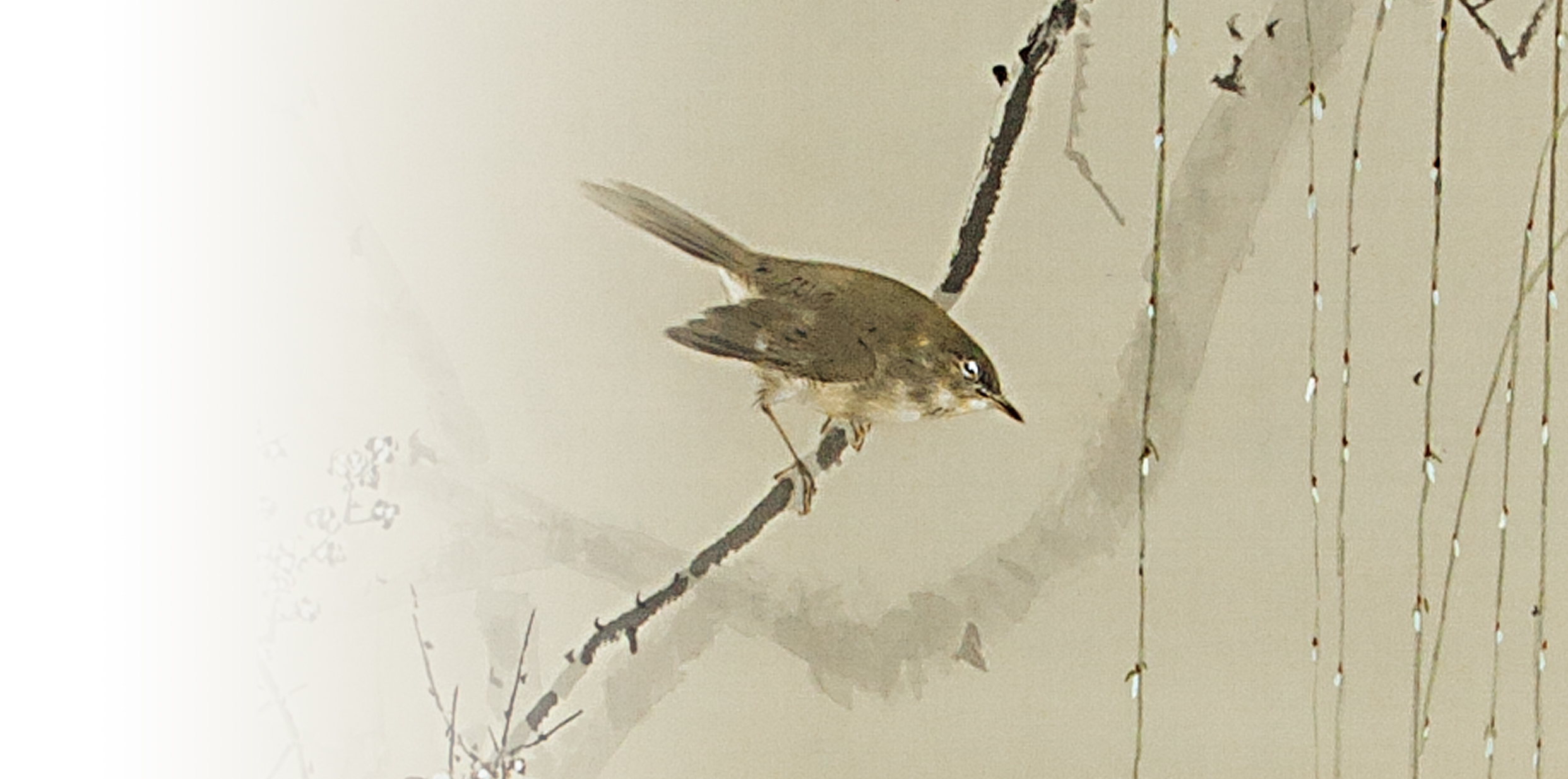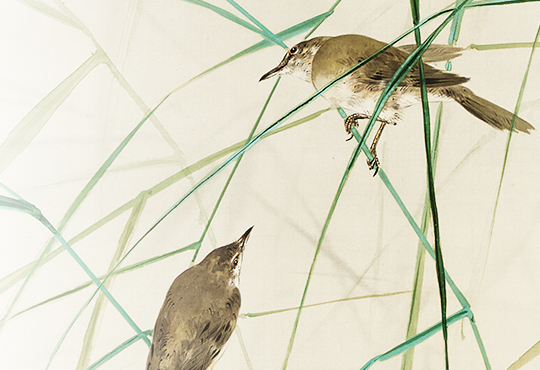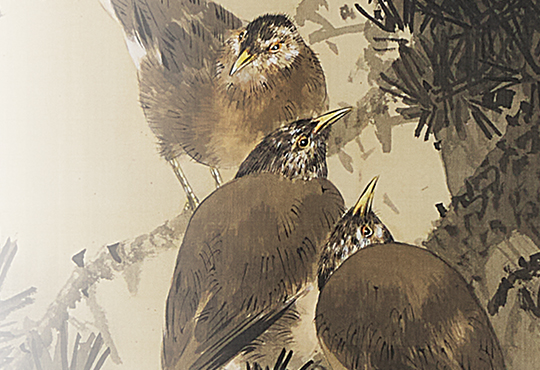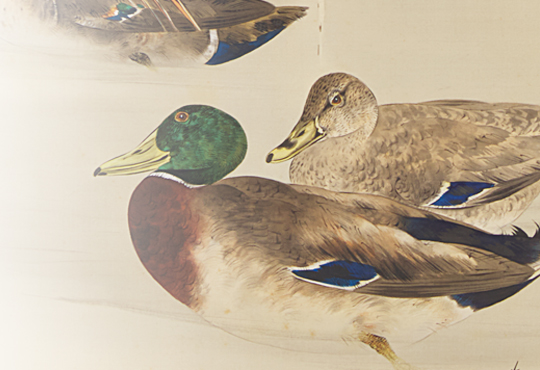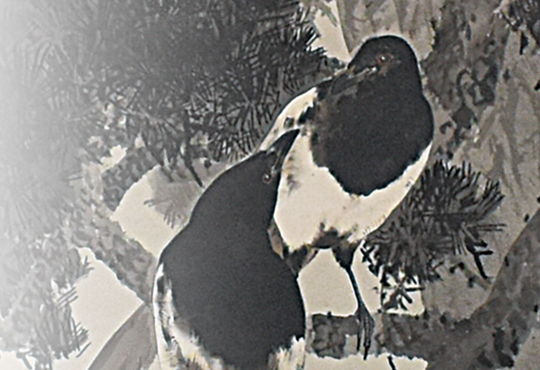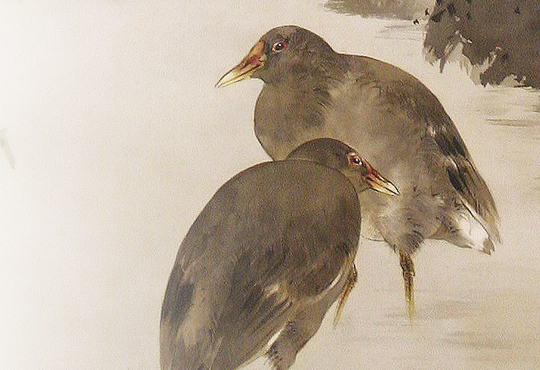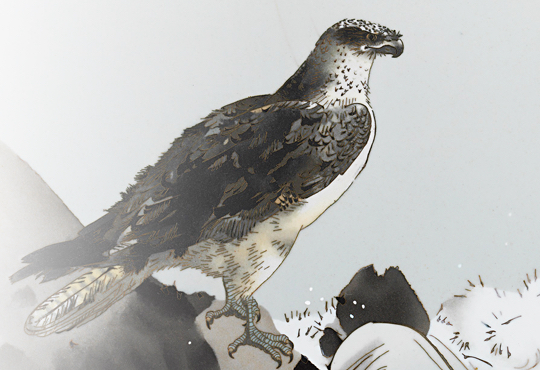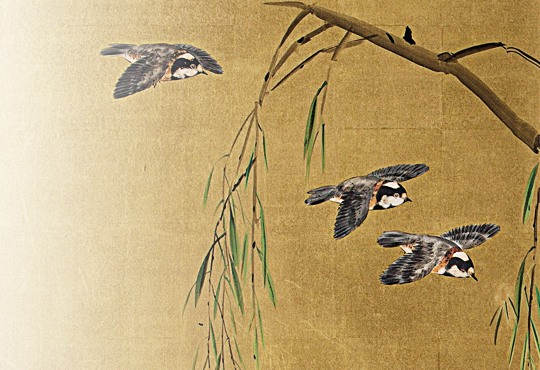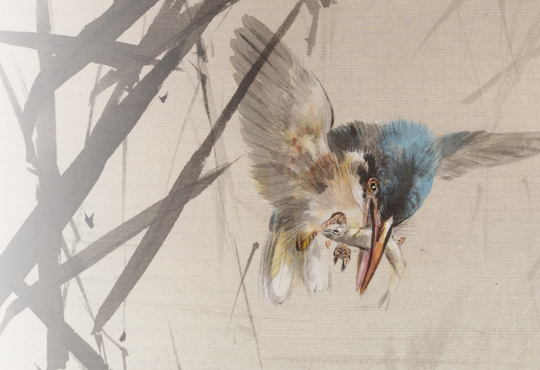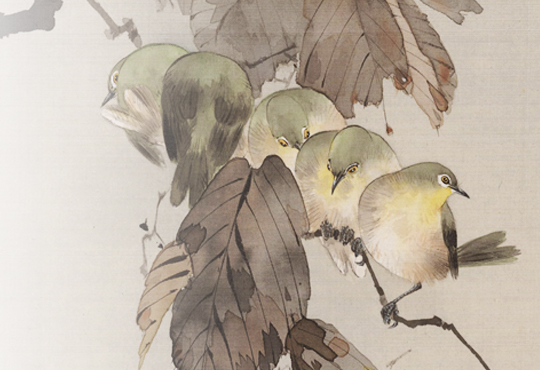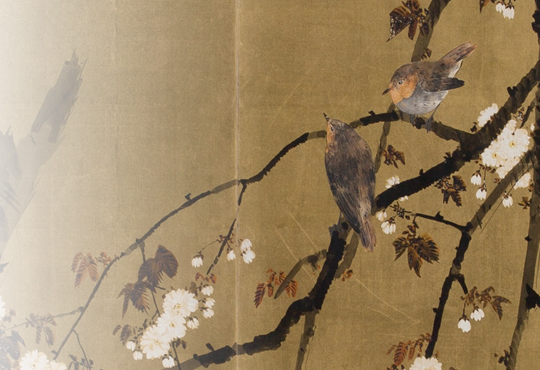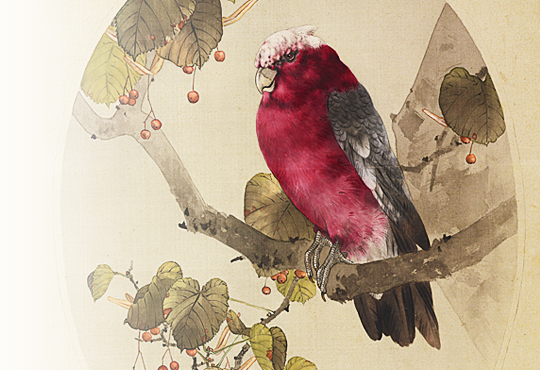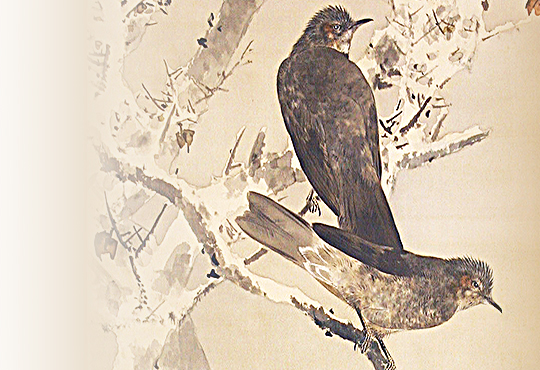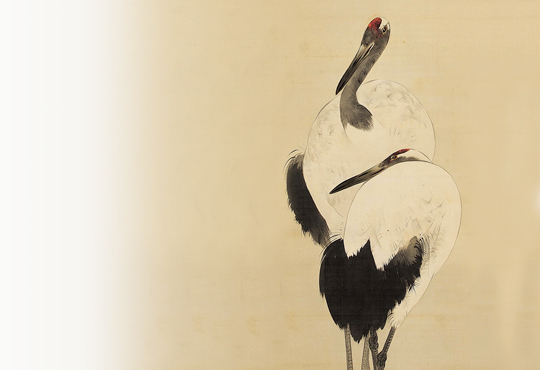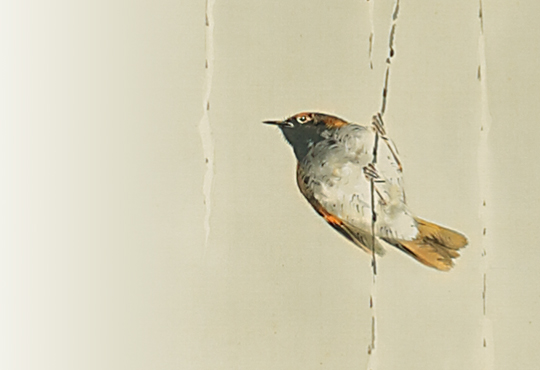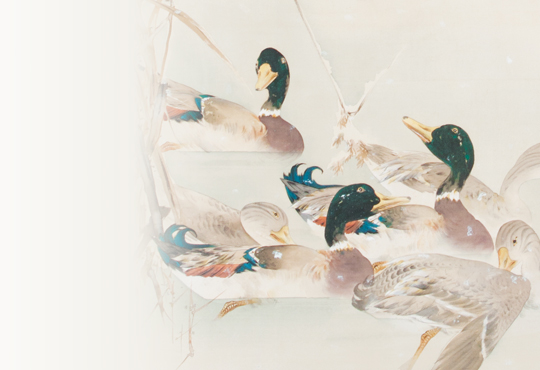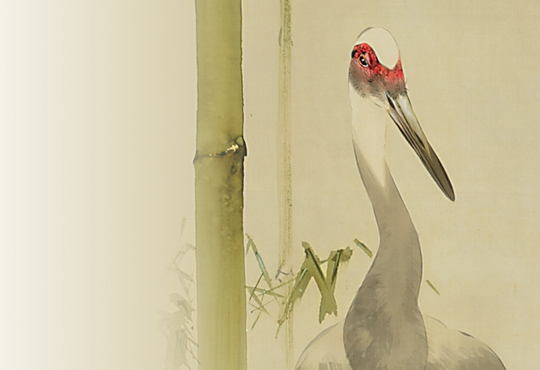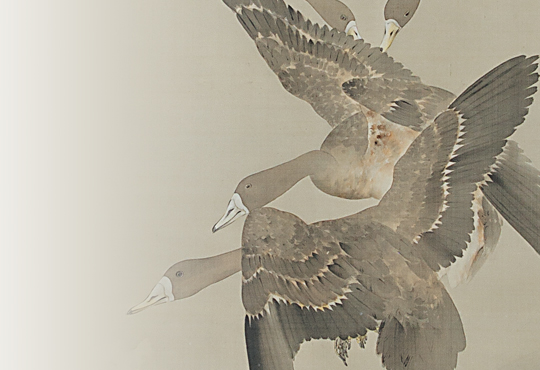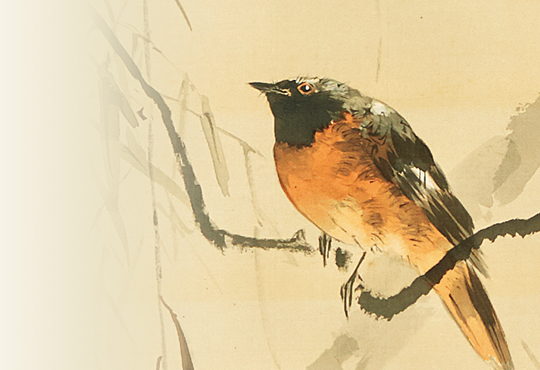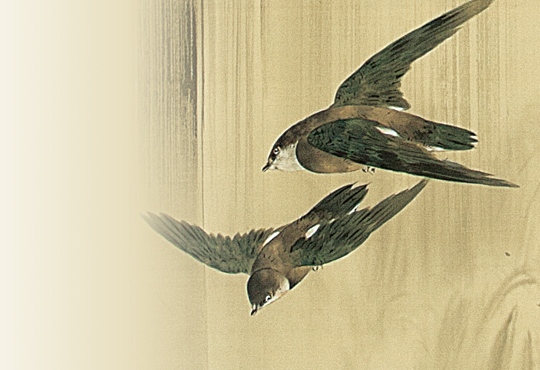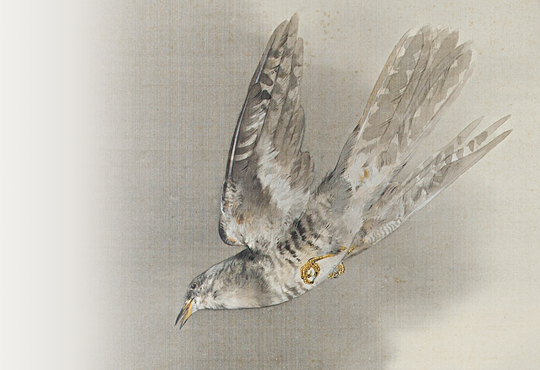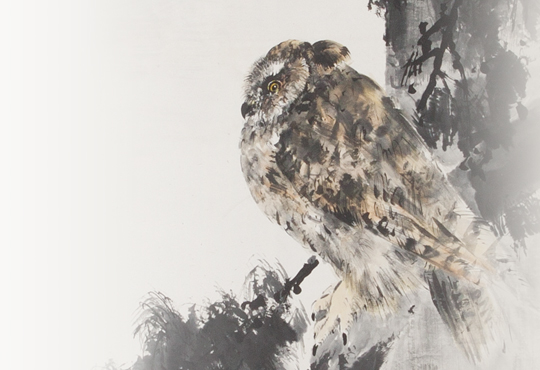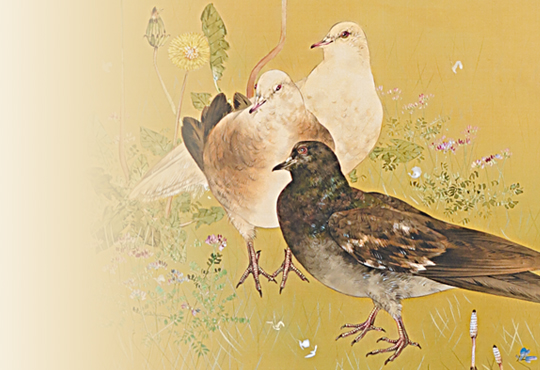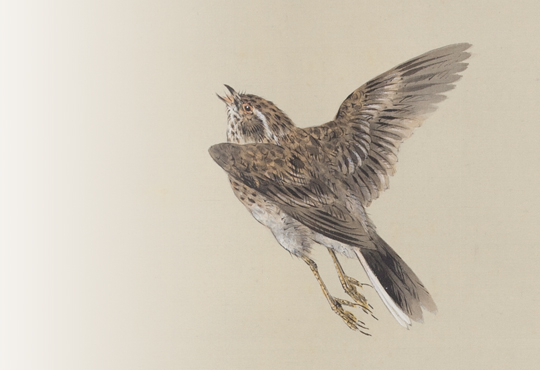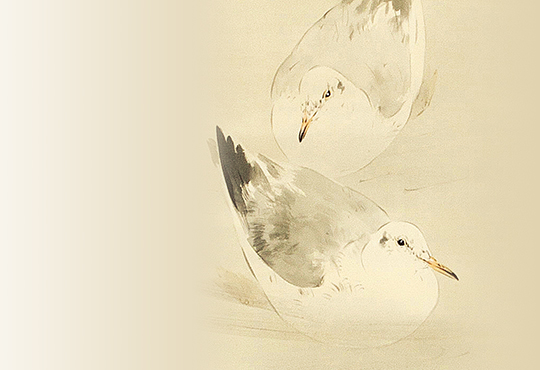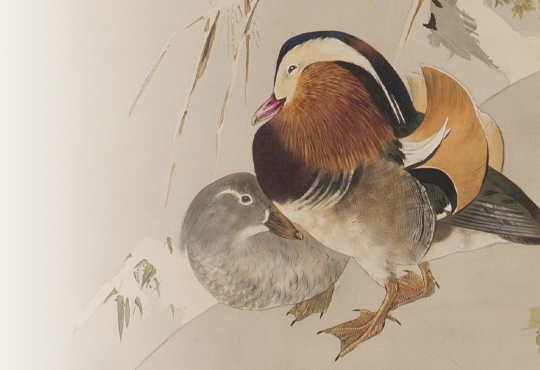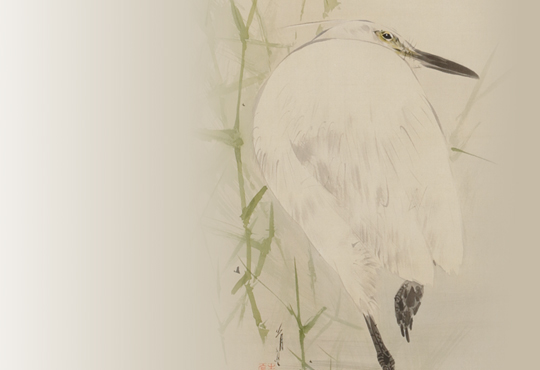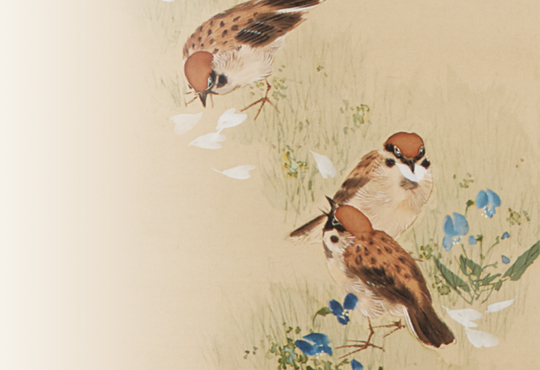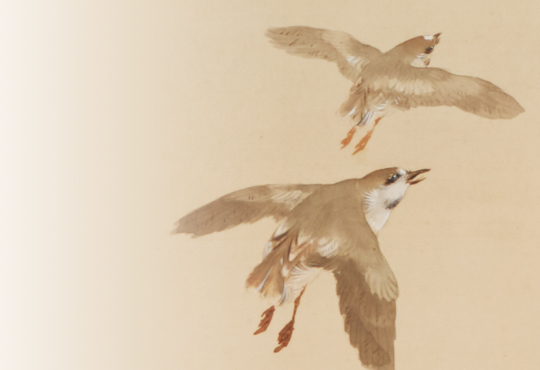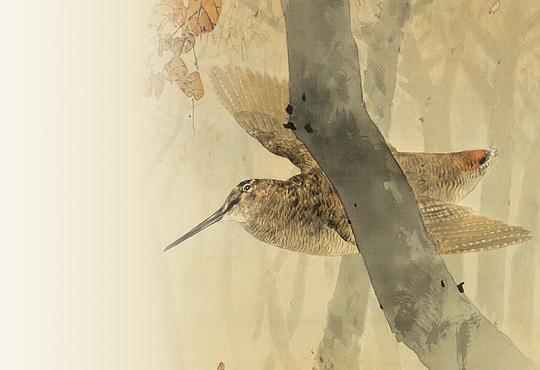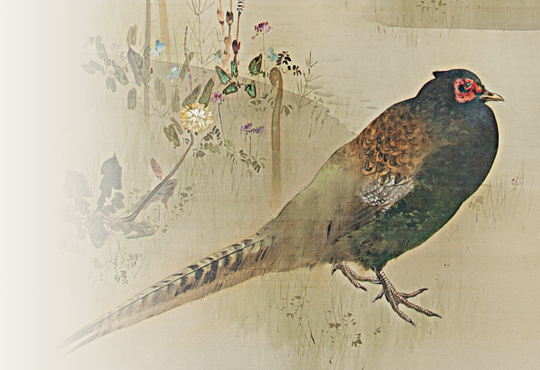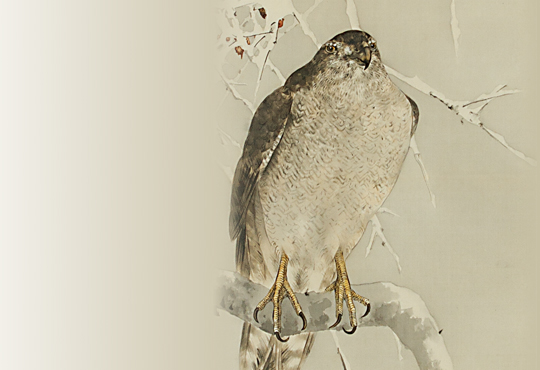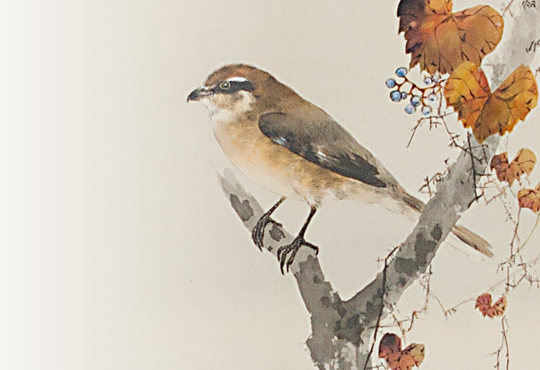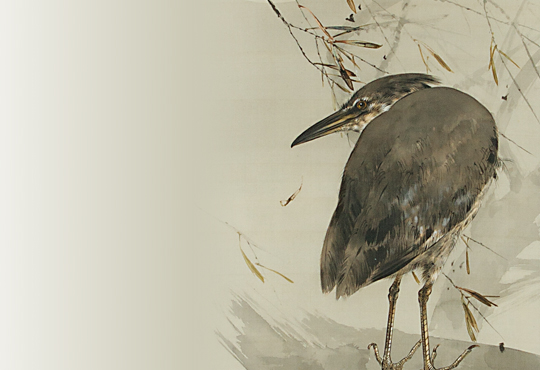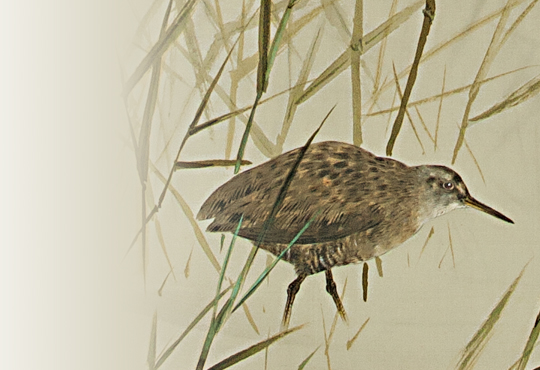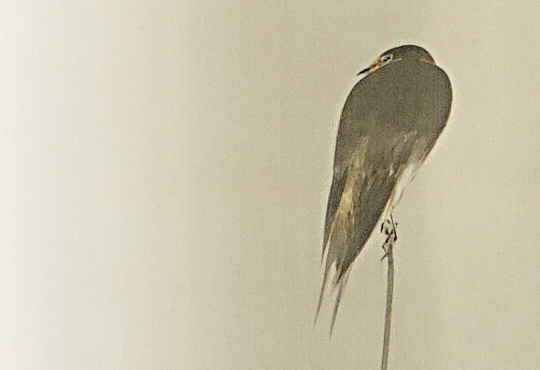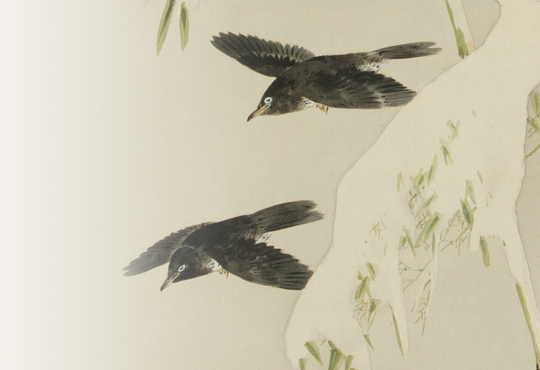Weeping Plum
and Japanese Bush Warbler
A set of twelve scrolls,
color on silk, with a box signed and sealed by the artist
size : 115×40 ㎝ /212×54 ㎝
vol.02 The Real Japanese Bush Warbler: Weeping Plum and Japanese Bush Warbler
Japanese Bush Warbler is one of the most renowned species among all the Japanese birds.
Without a doubt, the cultural contributions of the warbler are undeniable as seen in the literatures, traditional sweets and so on. However, how many of us have actually seen a real Japanese Bush Warbler?
The warbler commonly appears in Japanese paintings.
There are numerous masterpieces such as “Bamboo, Plum and Japanese Bush Warbler” by Ogata Korin (Miho Museum), “January” from “Birds and Flowers through the Twelve Months” by Sakai Hoitsu (the Imperial Household Agency Sannomaru Shozokan), “Cherry Blossoms” by Maruyama Okyo (Tokyo National Museum), and “Early Spring” by Yokoyama Taikan (The Tokugawa Art Museum). Sadly though, the depictions of the warbler are not quite accurate in most cases. There are two types of mistakes. Color is the first one. The actual color of a Japanese Bush Warbler is olive (dark yellow) as we call the color “Uguisu” after Japanese name of the warbler, but the color used in many cases is yellow green. This is the color of another songbird: Japanese White-eye(Zosterops japonicus). The second common mistake is about the pattern. Many bird species have eyebrow-like patterns (supercilium) above their eyes, and so does Japanese Bush Warbler. Yet, supercilium on the warbler is very faint and not so visible.The mistake lies here where the supercilium is painted bold and clear, which makes the bird look like another species such as leaf warblers or reed warblers. I expect that the painters who made those mistakes have never seen the Japanese Bush Warbler and used the predecessor’s painting as the source of their motifs.
Let’s take a look at Japanese Bush Warbler painted by Seitei. In this painting, “Weeping Plum and Japanese Bush Warbler” , a warbler perches on a branch of the white plum tree. The weeping branches spread widely and some flowers of the white plum are in bloom. The warbler is facing right, so it must have just flown from the left. In the next moment, the bird will fly away towards the upper right. The body is colored with olive green and is slightly round, its wings are hanging down, and tail is pointing up. Theeye-ring is painted very slightly and the supercilium is almost non-visible. Undeniably, this is a real Japanese Bush Warbler.
Nevertheless, there is a mystery in this piece. For some reason, the eyelid is half closed. Birds have eyelids just like us, but they close from bottom to top, opposite to human. The depiction of the warbler closing 1/3 of the eyelid is ornithologically accurate. Yet, the question remains as to why Seitei painted like this. One possibility is that the Japanese Bush Warbler might have been exhausted. In researching birds, we hold them in hand and measure body size, attach leg-rings, and take blood etc. At times, birds get tired during the research work and close their eyes. We warm them up and have them rest in dark when it happens. Soon enough, they regain energy and mobility, then fly away actively. Quite possibly, Seitei was holding a live warbler while sketching and eventually might have gotten the bird tired. It must have been easier to draw the moveless bird. Or, he might have used a dead one for sketching. When birds die, all muscles of the body are relaxed. The half-closed eyelids, dangling wings, and the too rounder body in the painting might be telling us that he might have made a dead bird a model of his Japanese Bush Warbler.
Seitei’s birds always leave us a bit of mystery.
Author : Masao Takahashi Ph.D. (Ornithologist)
Dr. Masao Takahashi was born 1982 in Hachinohe (Aomori prefecture) and graduated from Rikkyo University’s Graduate School of Science. Dr. Takahashi specializes in behavioral ecology and the conservation of birds that inhabit farmlands and wet grasslands. Focusing on the relation between birds and art, he has participated in various museum and gallery talks.
